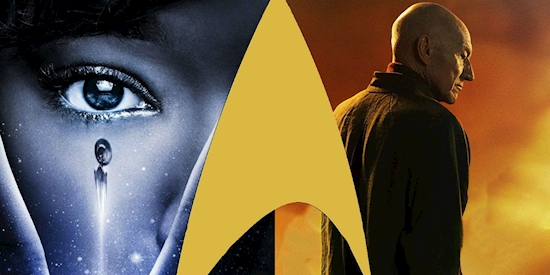Star Trek: Discovery Continues A Picard Romulan Idea
The latest episode of Star Trek: Discovery, "Unification III," hinges partly on the Qowat Milat, a sect of Romulan warrior nuns introduced in the first season of Star Trek: Picard. While acclimating to their new reality in the 32nd century - and while attempting to unlock the mystery of the Burn - Michael Burnham and Captain Saru learn that a massive shift has occurred on one of the Federation's oldest, foundational planets, Vulcan.
The Vulcans and Romulans began as the same species on Vulcan, only for the Romulans to eventually leave and reject the Vulcan way of life. The Romulans settled on a planet they named Romulus, and would position themselves as one of the Federation's fiercest enemies. In the 24th century, Ambassador Spock made efforts to begin reunification of the two peoples, though he faced considerable resistance from both his own people and most of the Romulan power structure.
Click the button below to start this article in quick view. Start nowSpock's dream of reunification would eventually happen, in no small part due to the underground movement he began on Romulus, established in the classic Star Trek: The Next Generation two-parter "Unification Parts 1 and 2." Another key factor were the Qowat Milat. After the destruction of Romulus, the warrior nuns were said to be a key force in opening discussion between the two peoples again, and eventually, they played a crucial role in the decision to unify the two races.
The Qowat Milat was first introduced in the Picard episode "Absolute Candor," named for the order's core belief - that blunt honesty was the only way to live. A young orphan boy named Elnor was taken in by the nuns, and he eventually joined Picard's mission to save the android, Soji Asha.
But to Burnham's shock, the reunified Vulcan - now called Ni'Var - left the Federation behind after the Burn, partially due to a disastrous experimental propulsion project called SB-19 that some blame for the Burn. In an effort to bring them back into the fold and get more information about SB-19, Burnham calls for a T'Kal-in-ket, essentially a hearing to defend a theory - in this case, the theory that the Burn was not caused by SB-19. And if she hadn't had enough surprises, Burnham's representative in the T'Kal-in-ket turned out to be her mother, Gabrielle Burnham, who joined the Qowat Milat order after her jump into the future.
Star Trek: Discovery is in a unique position now. Once constrained by its prequel trappings, the jump to the future now means the show can reference literally all of Star Trek lore since it all happened hundreds of years before the current events of Discovery. Weaving those threads between Star Trek: Picard and Discovery is a smart way to create some connective tissue for a show that occasionally seemed disconnected from the rest of the Star Trek mythos. Will there be more connections to Picard? Only time will tell, but it's a safe bet that the two shows will continue to echo each other in subtle ways.
About The AuthorSource: screenrant.com

